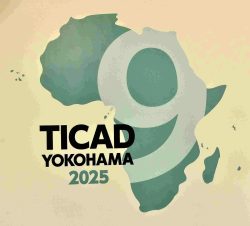
Kagefumi Ueno
10:00 JST, January 31, 2024
Undertakers specializing in pets are said to have grown their business in Japan in recent years. The popularity of pet funerals appears to stem from two modern-day factors, but the mentality behind such rituals has ancient roots.
The first modern factor is the prolonged COVID-19 pandemic, during which many pet lovers remained at home and came to share more time with their pets, deepening their mutual bond. Many people began to regard their pets more fully as family members.
The second factor is an aspect of the increasingly aging society in Japan. Elderly people have become more likely to live solely with pets rather than with their kin, strengthening the mutual bond between people and pets even further. This trend may not be unique to Japan, as people have pets all over the world, but I believe the Japanese case is particularly noteworthy.
On what ground? Before giving a clue, I would like to mention three specific services offered by pet undertakers. First, they cremate pets either at their facilities or at the homes of pet owners. Second, they offer funeral services — religious or secular — as desired. Third, they assist in burying the bones at a tomb in your garden or at a collective burial facility provided by Buddhist temples.
All in all, you could say that pets are treated almost like family members even after they die.
As I understand it, the traditional ethos in historically Christian countries does not support holding pet funerals as the Japanese do. From such a perspective, the Japanese practice may appear to be “weird” or even “pagan.” Christians have traditionally believed that salvation is accorded only to the souls of humans, never to animals. In today’s secular, post-Christian culture, this understanding may no longer seem relevant. Nevertheless, this understanding still seems to occupy or affect people’s minds as a force of habit.
Even in historically non-Christian Asian countries such as China and Korea, I understand that they seldom offer funeral services for pets, possibly for cultural reasons. In part they tend to notionally distinguish people from animals, which could be described as anthropocentric. In contrast, the Japanese, who are generally much less anthropocentric or more nature-centric, draw such distinctions less sharply.
Indeed, it is not only pets whose souls the Japanese revere. They revere or soothe the souls of many categories of dead animals — ranging from animals sacrificed for medical testing to fish or shrimps or whales that are caught and eaten, to police dogs and so forth.
They do this through religious ceremonies called kuyo — also held for deceased human beings — that are by and large officiated by Shinto or Buddhist clergy. They pay tribute to the animals’ sacrifice. Even today kuyo ceremonies for animals take place almost everywhere in Japan. For example, if you visit the Tsukiji Namiyoke Jinja shrine in Tokyo, you can see stone monuments for the fish, clams, eggs and even kombu seaweed that were once sold at the nearby Tsukiji Market.
Nor is the inclusion of kombu so unusual. The Japanese hold kuyo ceremonies even for inanimate objects — used utensils such as needles and kitchen knives, used medical syringes, used pens and brushes, used factory machinery and so forth — in order to thank these objects for the services they offered for a long time, just before they are disposed of. It is to soothe their spirits or souls.
While I was serving as the Japanese ambassador to Guatemala over 20 years ago, a Guatemalan government minister who was of Mayan origin told me that indigenous Mayan people similarly practice religious ceremonies to thank machinery for its hard work just before it is scrapped. Like them, the Japanese sometimes regard even lifeless things as people by sensing their souls. Moreover, they also sense divinity even in the lowliest insects or smallest plants. Many scholars call this mind-set animistic, pantheistic or polytheistic.
Below the surface of the popularity of pet funerals, one may perceive a very animistic or pantheistic ethos or sentiment at the basic stratum of Japanese culture. It is a trait the Japanese may share with Mayans or some of the indigenous peoples of North America.
This animism or pantheism has significant visible, tangible aspects as well as non-visible, abstract aspects.
First, at a visible, tangible level, the Japanese as nature worshippers adore mountains, springs, lakes, waterfalls, rocks, majestic trees, the observable planets, and so forth, much like the Mayans, Pre-Christian Celts or Australian Indigenous people. These things are deemed to be divine or sacred. That’s why many Shinto shrines are in the vicinity of those sacred things to facilitate the worship of their divinity.
Against this backdrop, many classic works of Japanese literature — notably the Manyoshu , a compilation of classic waka poems of the eighth century, and haiku by 17th-century poet Matsuo Basho — are not seldom manifestations of such animistic or pantheistic sentiment.
Second, at a more abstract or spiritual level, the Japanese tend to identify themselves with Mother Nature or the Universe and have a sense of unity with Nature or a sense of belonging to it. They believe that they can reach the ultimate spiritual stage only when or after they become absorbed by or melted into Nature by discarding their self or ego. A Mayan or a pre-Christian Celt might share a similar cosmovision.
It should now be clear that at the basis of today’s Japanese civilization lie two distinctive elements, namely the animistic ethos on one hand and modernism and rational thinking on the other. Hence, contemporary Japanese civilization could be interpreted as a hybrid of two very distinctive and sometimes contradictory things, namely, pre-modernity and modernity. Whereas their pre-modern half urges people to revere souls of waterfalls, trees or mountains in an animistic manner, their rational half urges them to take a scientific approach, setting aside animistic mentality. It is a kind of dualism or hybridity. The two halves sometimes clash. However, more often they coexist without conspicuous conflicts.
It may be a source of wonder or amazement that the 150-year process of modernization and industrialization of Japan did not substantially extinguish the people’s animistic mentality. Thus, even today, Japanese high technology is taken care of by those who abound in animistic ethos. Don’t take it as a contradiction.
This article was originally published on the website of the Union of Catholic Asian News (UCA News) on Jan. 18, 2023. It has been updated and revised by Ueno for The Japan News.
Kagefumi Ueno is a civilization essayist and a former Japanese ambassador to Guatemala (2001-04) and the Holy See (2006-10).
"Editorial & Columns" POPULAR ARTICLE
-

Violations of Subcontract Law: Major Automakers Must Eliminate Old Practices
-

Local Governments’ Tax Revenues: Devise Ways to Correct Imbalances in Tax Sources
-

5 Japanese Business Dinner Mistakes to Avoid — and What They Taught Me About Business in Japan
-

Heavy Rains in Asia: Support for Victims, Flood-Control Measures Urgently Needed
-

Rice Coupons: A Misguided Approach to Countering Rising Prices
JN ACCESS RANKING
-

Keidanren Chairman Yoshinobu Tsutsui Visits Kashiwazaki-Kariwa Nuclear Power Plant; Inspects New Emergency Safety System
-

Imports of Rare Earths from China Facing Delays, May Be Caused by Deterioration of Japan-China Relations
-

University of Tokyo Professor Discusses Japanese Economic Security in Interview Ahead of Forum
-

Japan Pulls out of Vietnam Nuclear Project, Complicating Hanoi’s Power Plans
-

Govt Aims to Expand NISA Program Lineup, Abolish Age Restriction






















